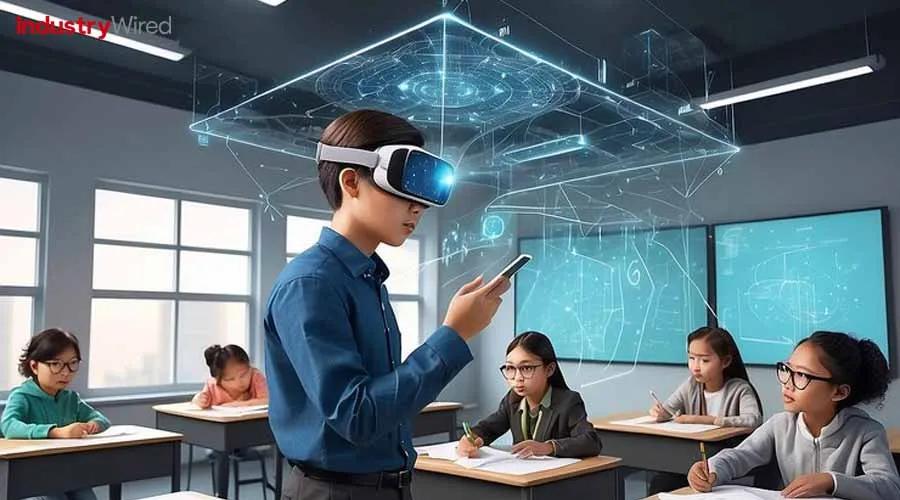How to Train Teachers to Use VR/AR tools Effectively: Essential strategies for Educators
virtual Reality (VR) and Augmented Reality (AR) are revolutionizing the education landscape. With their ability to create immersive and interactive learning experiences, these cutting-edge technologies are no longer confined to tech enthusiasts. However,their successful integration in the classroom largely depends on the ability of teachers to leverage these tools effectively. In this comprehensive guide, we’ll explore practical strategies, step-by-step tips, and real-world case studies on how to train teachers to use VR/AR tools efficiently, ensuring both educators and students reap the maximum benefits.
The Importance of Training teachers for VR/AR Integration
Embracing VR/AR in education promises engaging lessons, deeper comprehension, and increased student motivation. Yet,many teachers feel intimidated or ill-prepared to navigate these emerging technologies. Effective training not only builds confidence but ensures a smooth transition and maximizes educational outcomes.
- Improves teachers’ digital literacy and adaptability
- Fosters innovative teaching methods
- Ensures safe and responsible use of technology
- Enhances lesson effectiveness across learning styles
- Empowers students through immersive learning
Essential Strategies for Training Teachers to Use VR/AR Tools
1. Conduct a Needs Assessment
Before introducing any VR/AR professional advancement program, assess the current familiarity and comfort levels of your teachers. Understanding the baseline helps customize the training content and address specific knowledge gaps.
- Surveys and questionnaires about current technology use
- Interviews or focus groups to discuss expectations and concerns
- Assessment of existing infrastructure and resources
2. Begin with the Basics: VR/AR Fundamentals
Familiarize educators with the basics of VR and AR. Address common questions such as, “What are VR/AR tools?”, “How do they differ?”, and “Which devices and platforms best suit our needs?”.
- demonstrate various VR/AR tools used in education (e.g., Oculus Quest, Google Expeditions, Merge Cube, AR-enabled tablets)
- Introduce basic navigation, controls, and health & safety tips
- Explain different classroom scenarios were VR/AR can be applied
3. Offer Hands-On, Experiential Training
Teachers learn best when they get to experiment firsthand. Create training workshops where educators actively participate, simulate lessons, and solve real teaching scenarios using VR/AR devices.
- Guide teachers through step-by-step VR/AR lesson setups
- Encourage group activities to foster peer learning
- Allow time for troubleshooting and Q&A sessions
4. Integrate Pedagogical Best Practices
Simply knowing how to use VR/AR technology isn’t enough. Teachers must feel confident integrating these tools with sound pedagogical strategies. Focus on:
- Aligning VR/AR lessons with curriculum standards and learning objectives
- Creating inclusive experiences for diverse learners (e.g., students with disabilities)
- Assessment strategies for immersive learning experiences
5. Encourage Continuous Support and Reflective Practice
VR/AR technologies evolve rapidly. Set up ongoing support channels and communities of practice where teachers can share experiences, ask questions, and keep up-to-date.
- Establish mentorship or “tech ambassador” programs
- Organize regular meetups, webinars, or online forums
- Promote reflection journals or feedback cycles on VR/AR lesson execution
Practical Tips for Successful Adoption of VR/AR Tools in Education
- Start Small: Pilot with one or two VR/AR apps to reduce overwhelm and build mastery gradually.
- Collaborate: Encourage team-teaching or co-planning VR/AR lessons.
- Leverage Free Resources: Explore free VR/AR content libraries for schools (e.g., Google Expeditions, CoSpaces Edu).
- Monitor Student Engagement: Observe student responses and adapt lessons accordingly for the greatest impact.
- Prioritize Safety: Emphasize device cleaning, time limits, and supervision for safe usage.
real-World Case Studies: VR/AR Training Success Stories
Looking for inspiration? Here are two examples of schools that have successfully empowered their teachers to use VR/AR tools effectively:
Case Study 1: Bringing History to Life with AR at Lincoln Elementary
lincoln Elementary School piloted AR apps in Social Studies classes. Their approach involved hands-on teacher training sessions, peer coaching, and ongoing feedback forums.Teachers reported a 37% increase in student engagement, with students able to “walk” through ancient civilizations using AR overlays. By aligning AR activities to specific curriculum goals, teachers felt empowered and students developed a deeper understanding of history.
Case Study 2: VR Science Labs in Action at Riverside High
Riverside High invested in VR headsets for virtual science labs.Training included summer workshops, collaborative lesson planning, and an onsite tech ambassador. Teachers appreciated the gradual rollout, as they first observed VR demos, tried simulations themselves, then co-developed trial lessons. Over a semester, student proficiency scores in chemistry rose by 21% thanks to hands-on, risk-free lab experiences enabled by VR training.
Common Challenges and Solutions
- Challenge: Limited Technology Access
Solution: Schedule classroom rotations, apply for grants, and utilize affordable or shared devices. - Challenge: resistance to New Tools
Solution: Highlight teacher success stories, organize peer-led demonstrations, and provide ample planning time. - Challenge: Unclear Learning Objectives
Solution: Integrate VR/AR only when it enhances curriculum outcomes—never just for novelty. - Challenge: Technical Difficulties
Solution: Maintain IT support during rollout, offer troubleshooting guides, and keep backup traditional lesson plans.
First-Hand Insights: Teacher Reflections on VR/AR Training
“After initial nerves, being able to test-run VR headsets with students in a low-stakes environment helped me gain confidence.The peer support and bite-sized training sessions made all the difference.”
– Sarah, Middle School Science teacher
Teachers consistently stress the value of ongoing, hands-on practice, peer collaboration, and immediate feedback throughout their VR/AR professional development journey.
Conclusion: Empowering Teachers for the Future of Learning
Training teachers to use VR and AR tools effectively is foundational for the future of education. With strategic planning, inclusive and hands-on workshops, ongoing support, and a willingness to innovate, schools can unlock new possibilities for both teachers and students. By following these essential strategies, educational institutions can ensure a smooth, impactful transition to immersive learning.Start your journey today and empower your educators to be pioneers in the ever-evolving world of VR/AR in education.
Ready to Embrace the future?
Contact us for tailored VR/AR training workshops or explore our additional resources for educators eager to bring the next level of experiential learning to their classrooms.

